You may not find this terribly rewarding unless you're included here, so this is a good time for casual and random browsers to turn back before they get too caught up in the sweep and majesty of the proceedings and can't let go.
15-16 May 2018
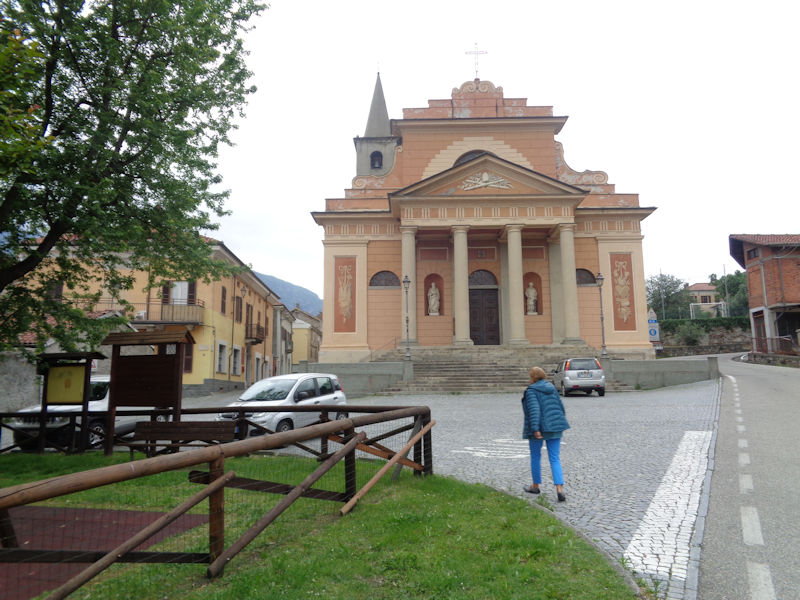
Our traditional stop when coming over the Grand St-Bernard into Italy is the B+B L'Ospitalità del Castello in Settimo Vittone near Ivrea, at the foot of the Aosta Valley -- this is the church at the bottom of Settimo village, along the State Route 26, and the B+B is a ways up the hill to the right. 15 May 2018.

That's the B+B L'Ospitalità del Castello up the hill, the old, only partly renovated castle on the left -- the older part of the castle with the three rooms of the B+B, more recently renovated, is out of sight behind that. The 9th century pieve and baptistery is across the yard to the right.
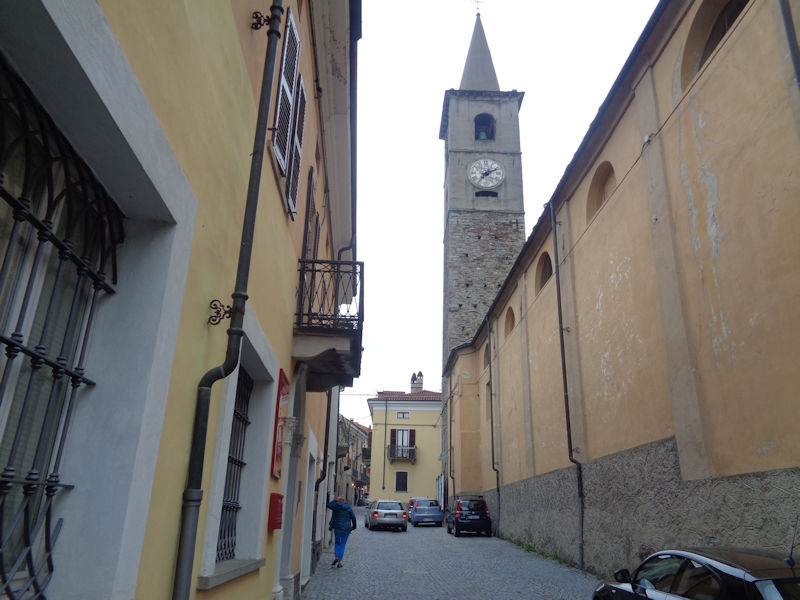
Normally when passing through, we have dinner at the Dolce Vita, on the State Route a kilometre to the south, but this evening we're headed for the Ristorante Winebar L'Angelo on the Via Marconi in the lower village.
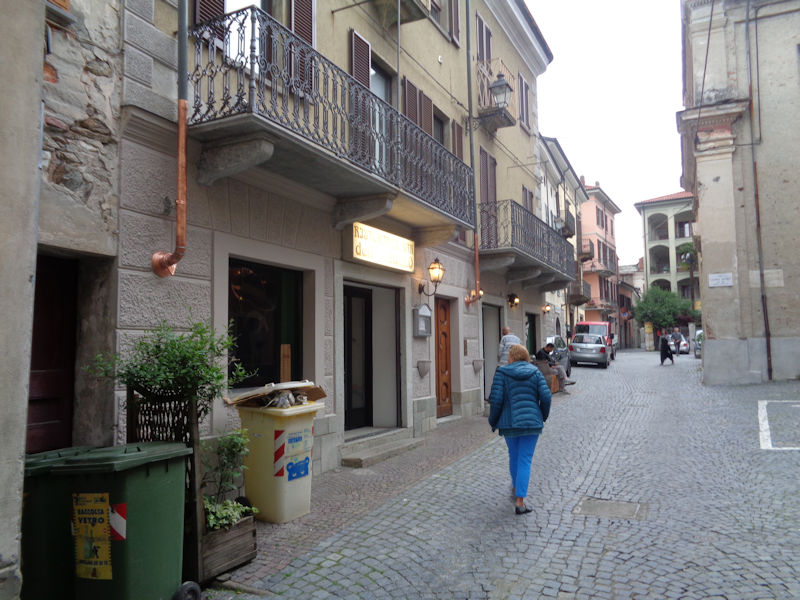
The Ristorante L'Angelo
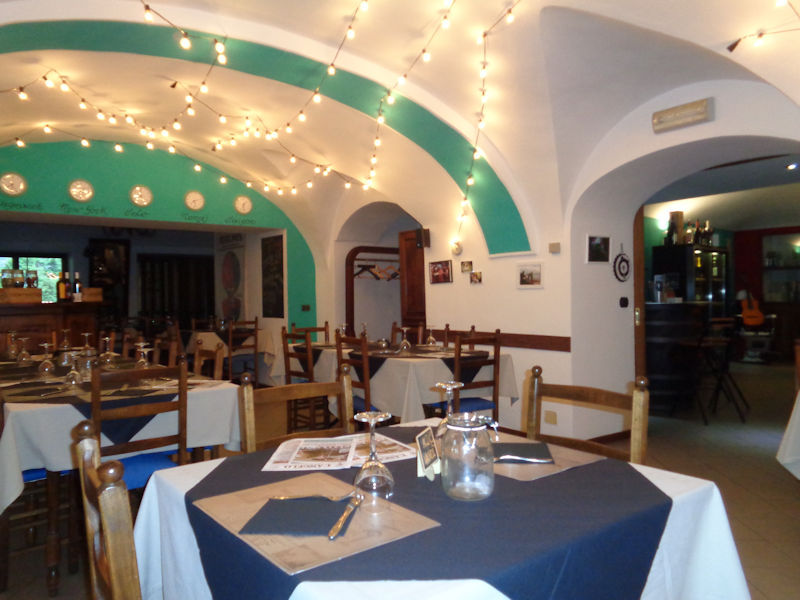
Very much to be recommended (it's empty at the moment because we're always the first ones in the door at opening time)
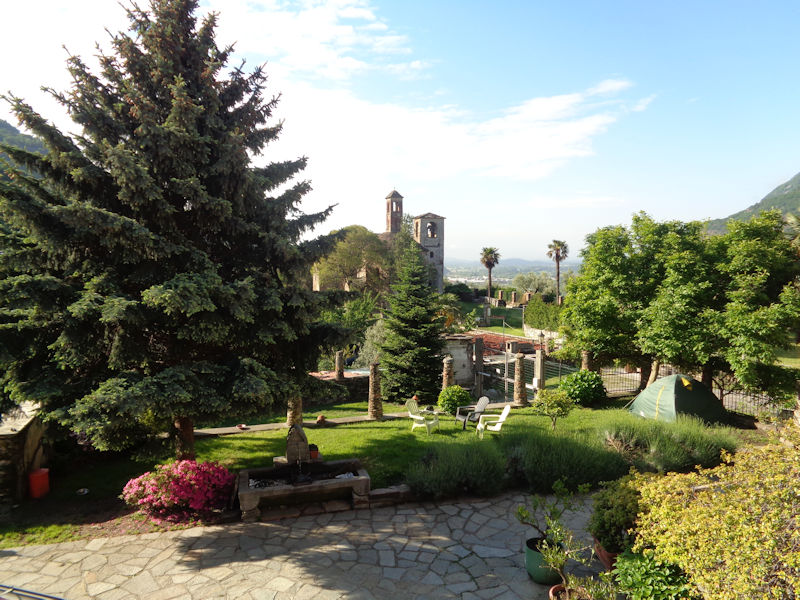
From our breakfast room the next day, with a view of the garden and the 9th century 'Battistero di San Giovanni e Pieve di San Lorenzo' across the yard
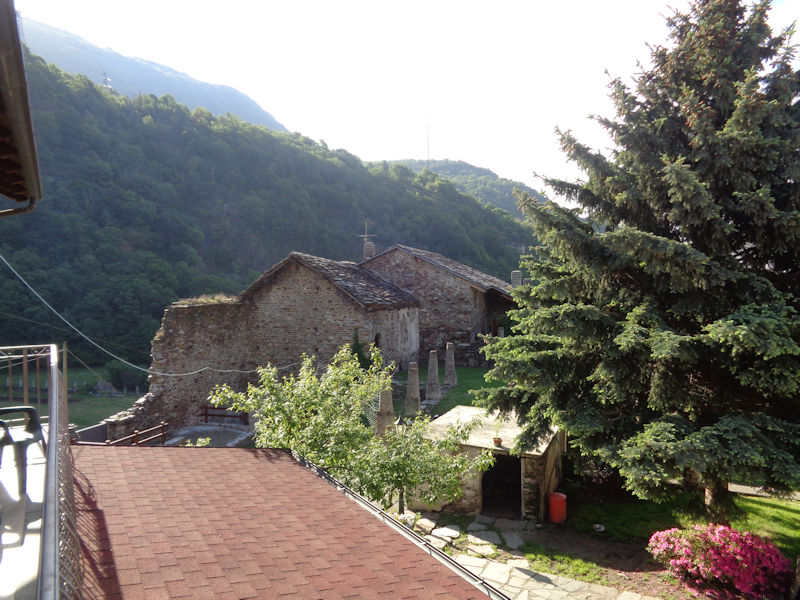
Farm buildings alongside
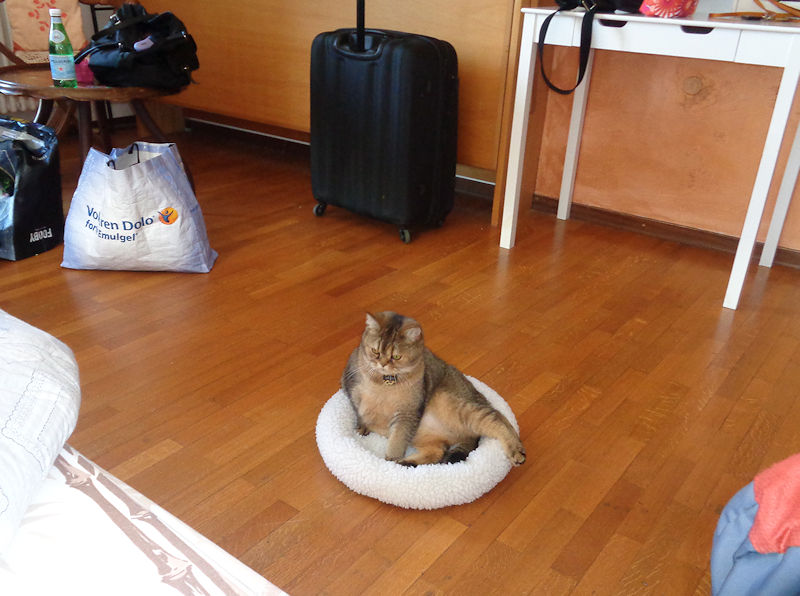
Melvin's been here before and is beginning to relax from the drive.
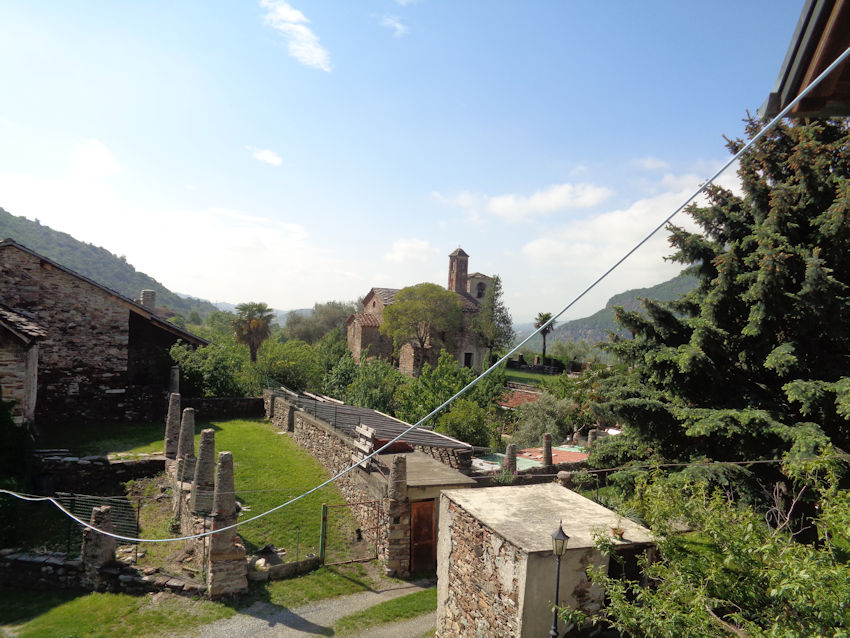
The pieve from our balcony
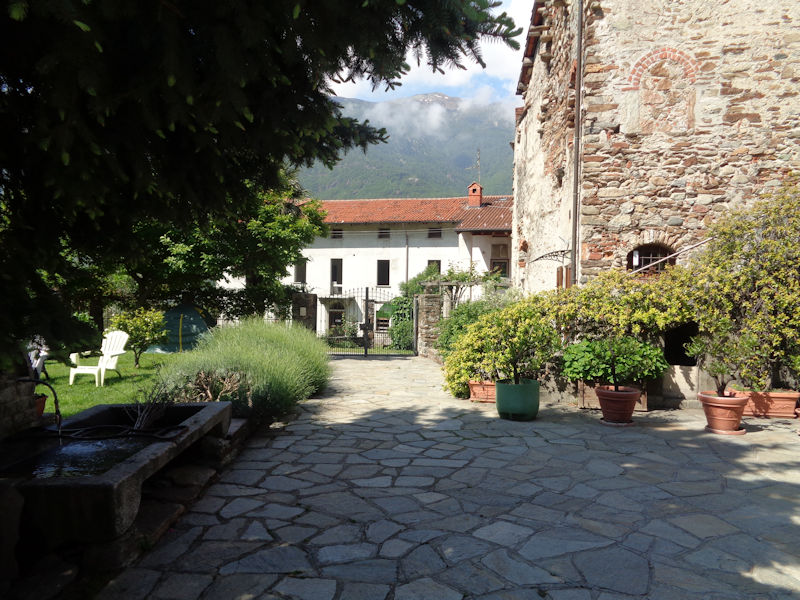
The other part of the old castle across the driveway, with a respected restaurant that's presently closed and looking for a buyer
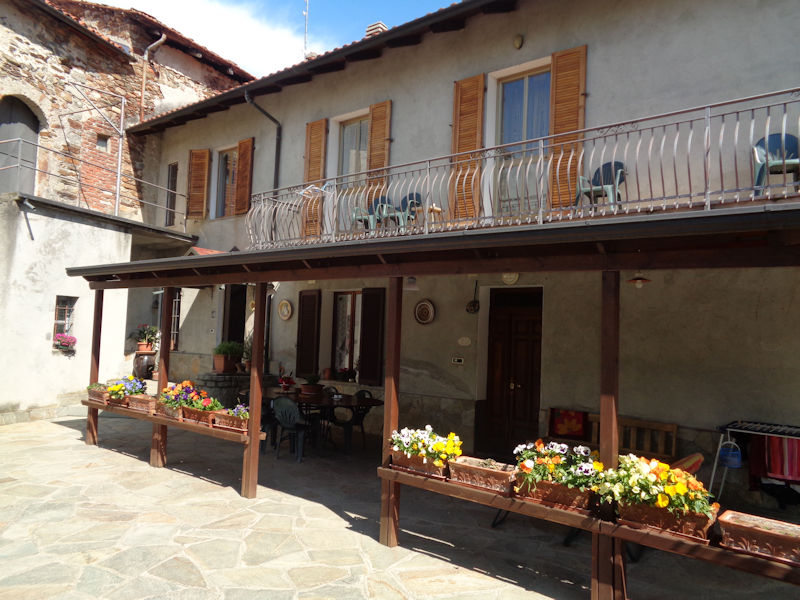
The B+B -- our favorite room, the biggest one, is at the corner of the building out of the photo to the right.
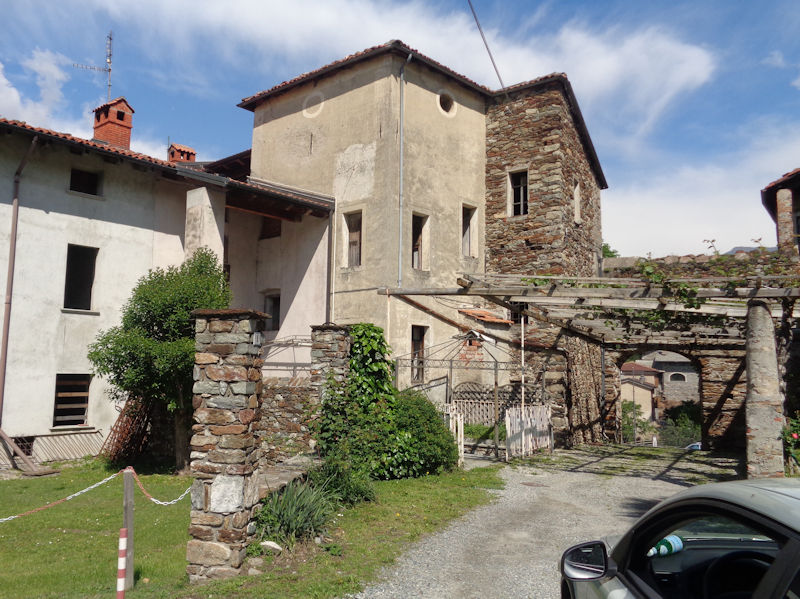
Now we're off through the narrow gateway to continue our journey southward.
Agliè
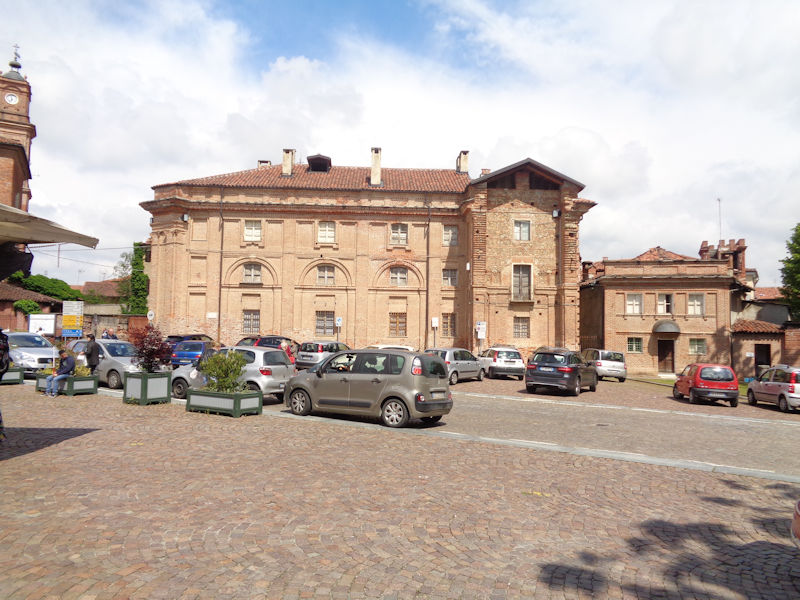
With plenty of time on our hands, we're off the autostrada and roaming about in the Canavese countryside south of Ivrea. Now we've fetched up in the Piazza Castello in the small comune of Agliè (pop. ca. 2,700).
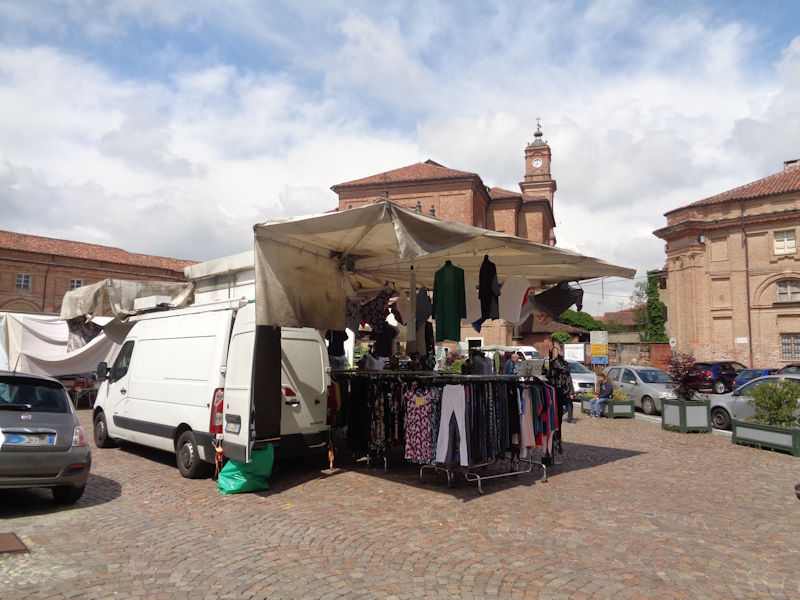
The street market's in progress
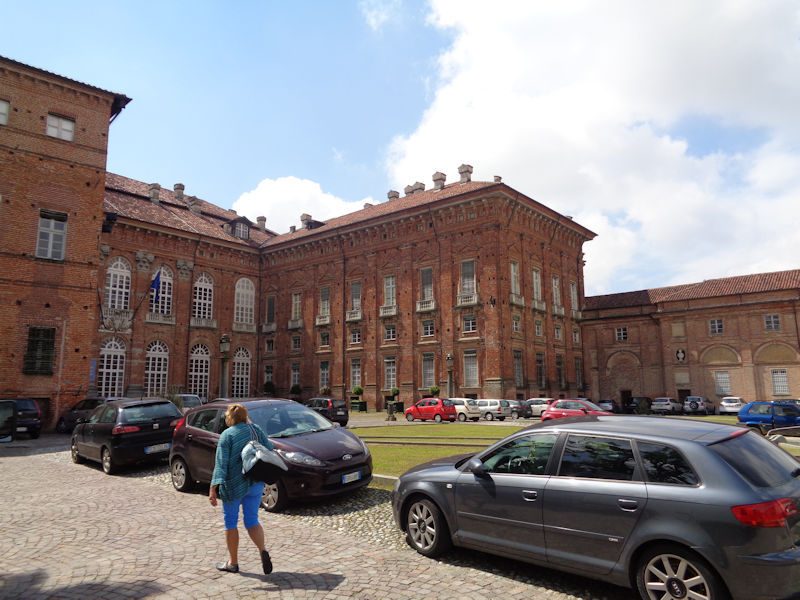
We've come to see the Castello Ducale di Agliè, one of the Residences of the Royal House of Savoy that are collectively listed since 1997 as a cultural property under the UNESCO World Heritage Convention.
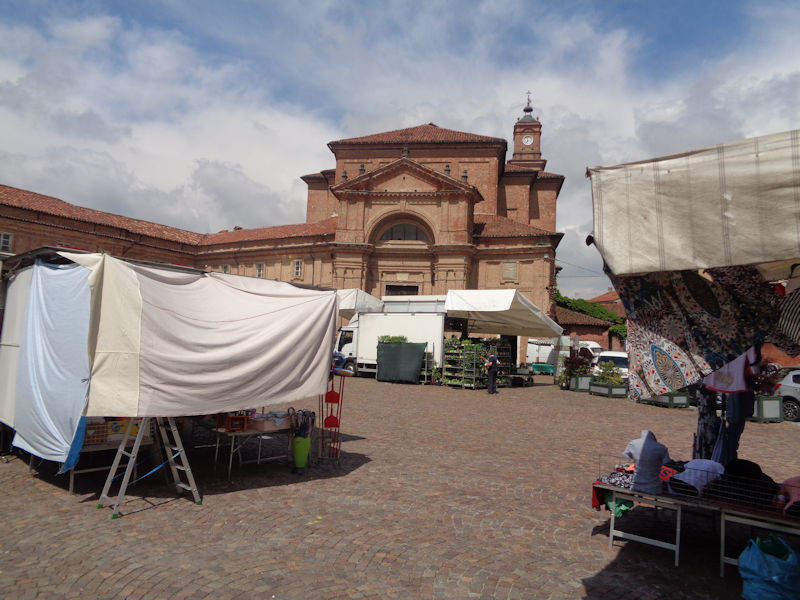
Across the piazza and facing the Ducal Palace, that's the Chiesa della Madonna della Neve.
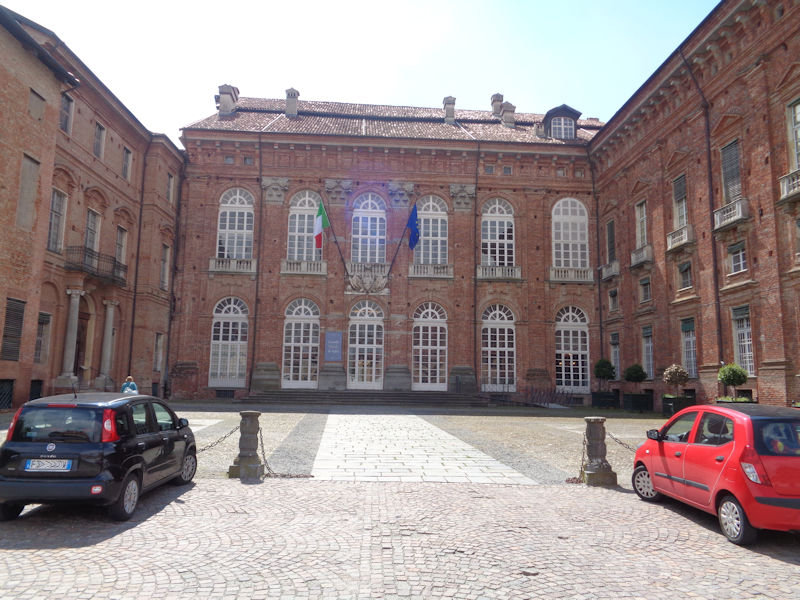
The front door of the Ducal Palace -- we have to wait for the next guided tour, so we'll wander about for a while.
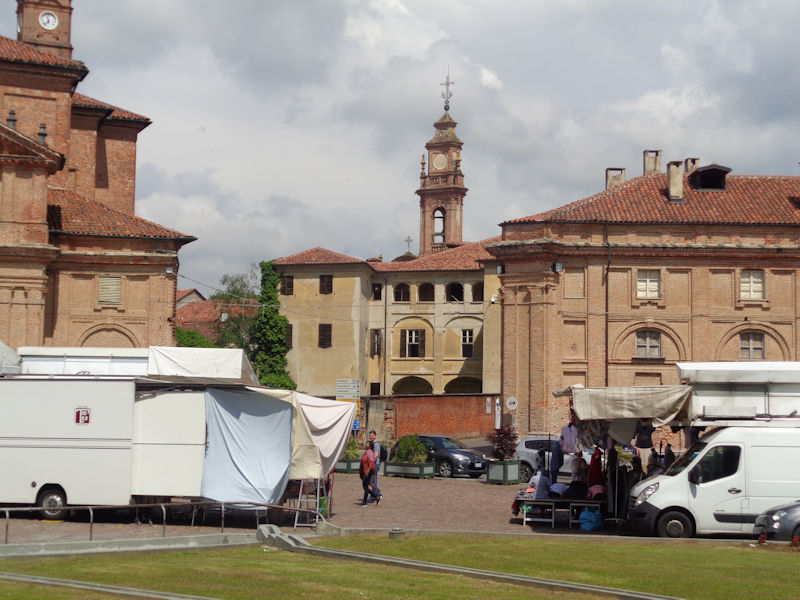
Algiè piazza scene -- the 18th century campanile in the centre belongs to the smaller Chiesa di Santa Marta.
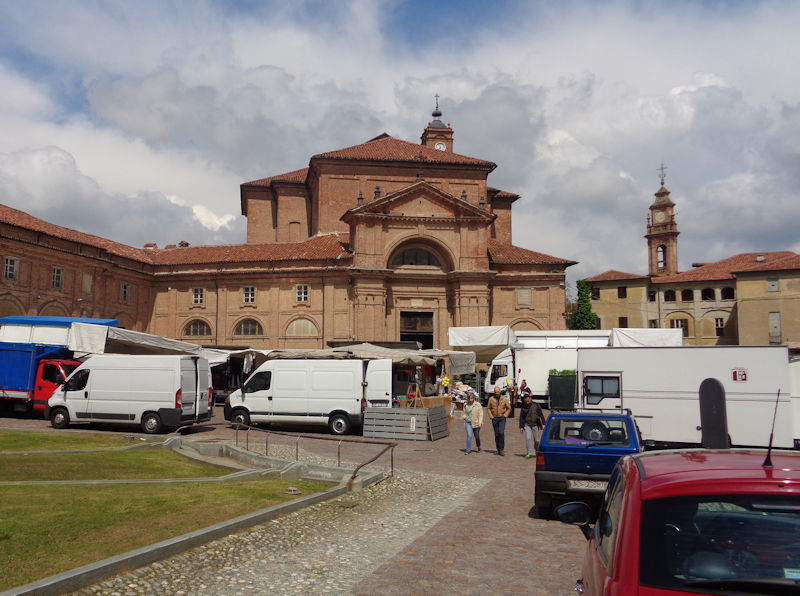
The Parochial Church of St Mary of the Snows
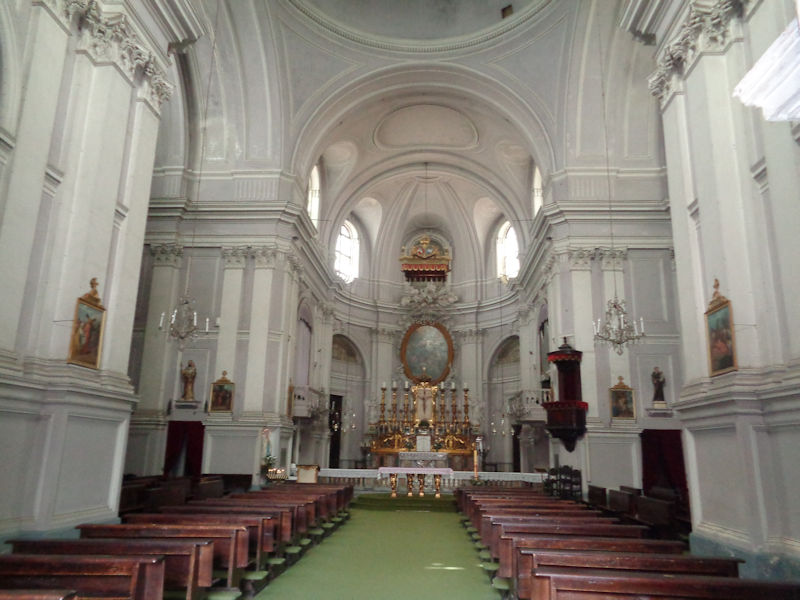
A quick look inside
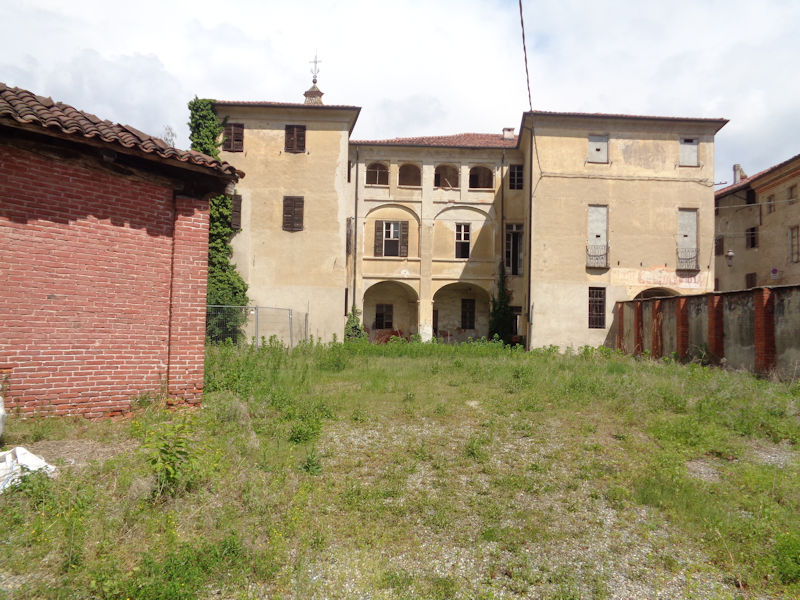
A fixer-upper
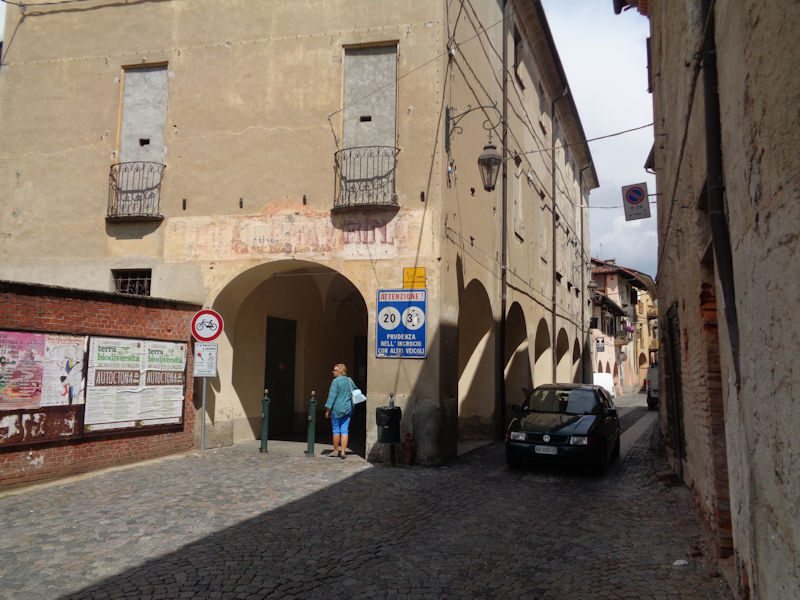
The Agliè high street, the Via Principe Tommaso, and the 150 metre long arcades that occupy half the street. The road was named for Tommaso Francesco of Savoy, the highborn 'Prince of Carignano', a thoroughly empty title, a lifelong unsuccessful commander in the 17th century French-Spanish wars mostly in the Piedmont area, working for both sides at one time or another.
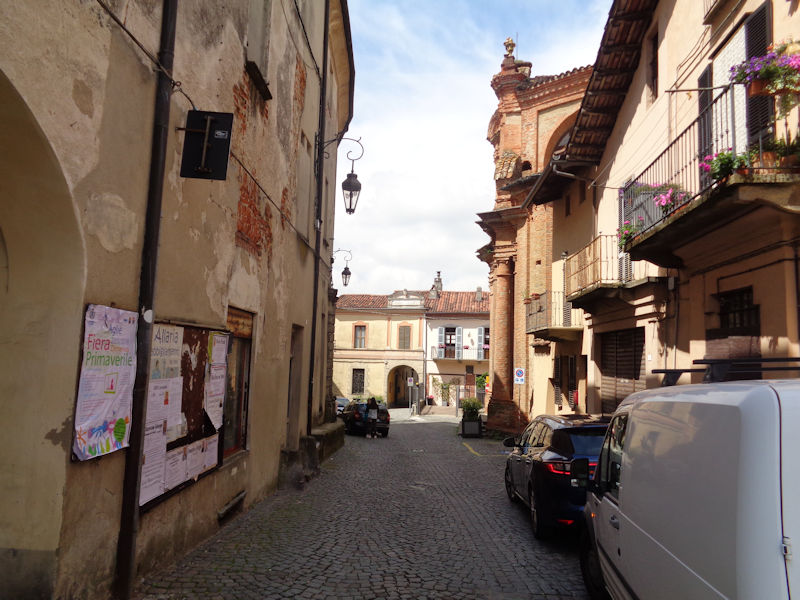
The Santa Marta Church off on the Marconi side street
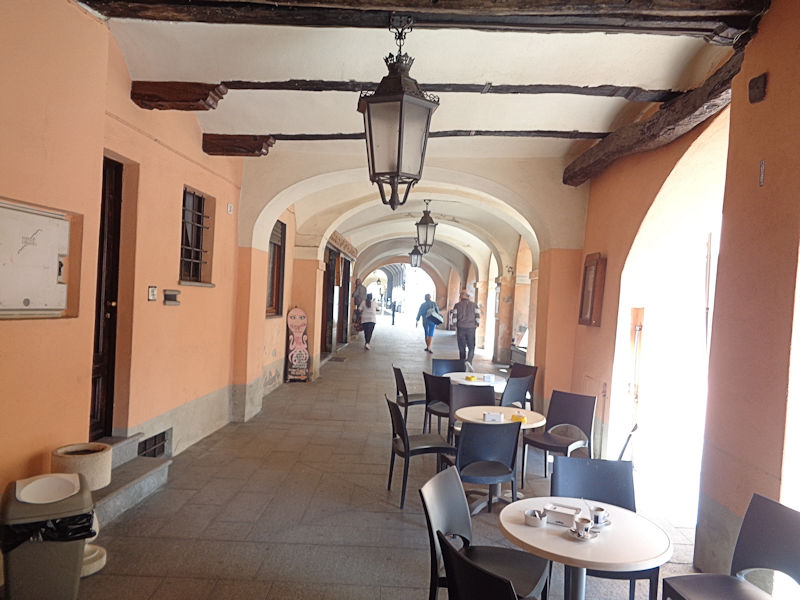
The long arcade through the main part of the town
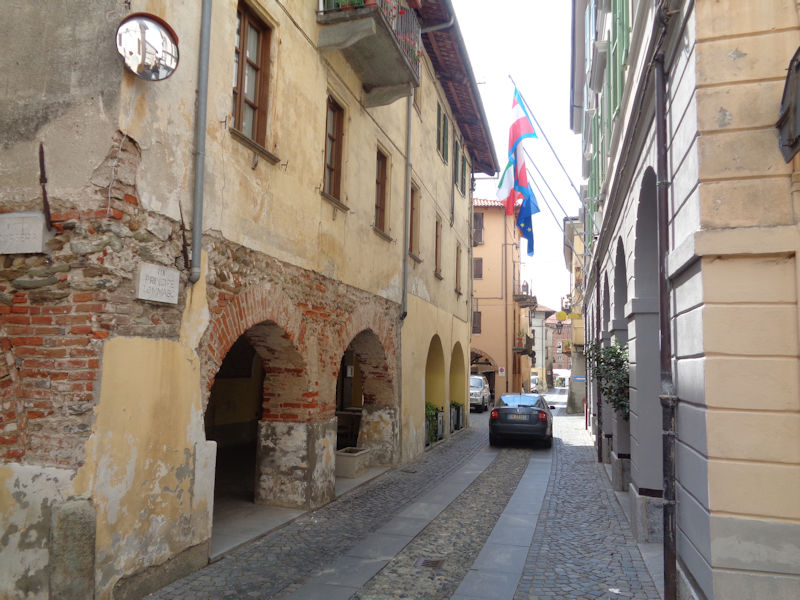
Agliè street scenes
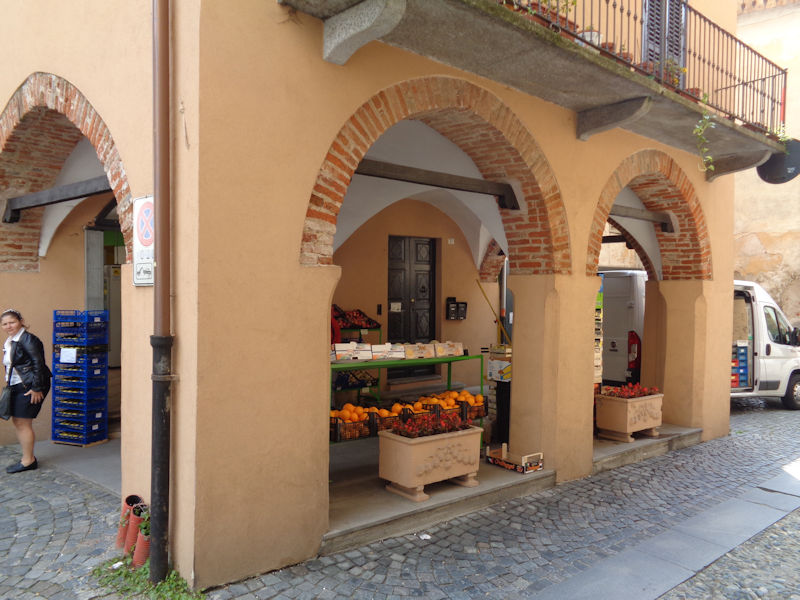
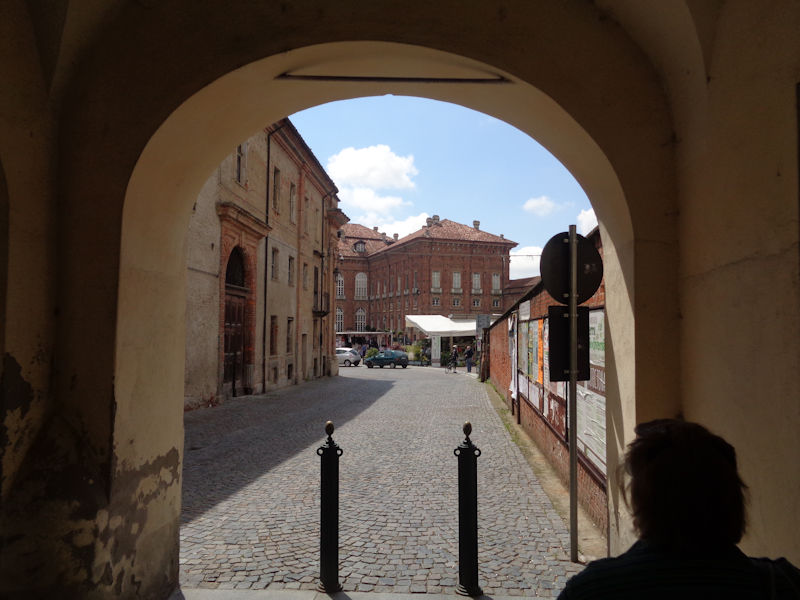
Back to the Piazza Castello for our guided tour
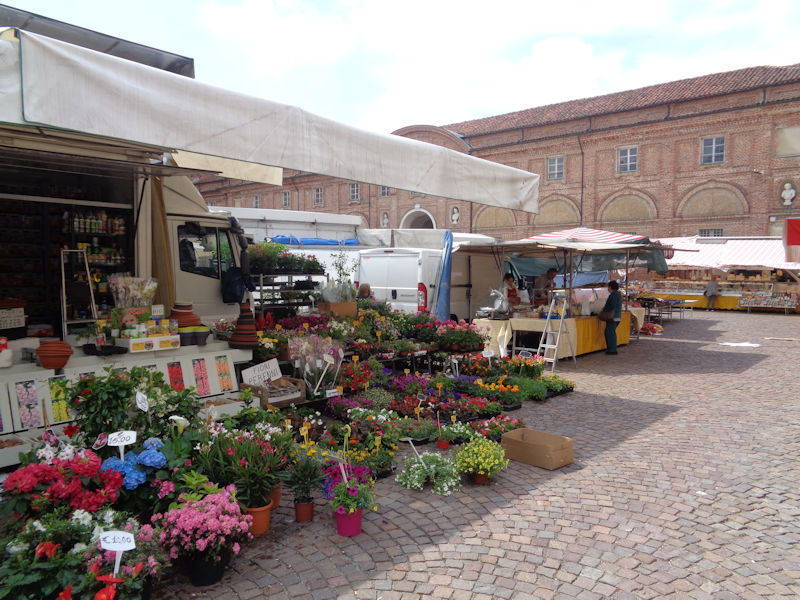
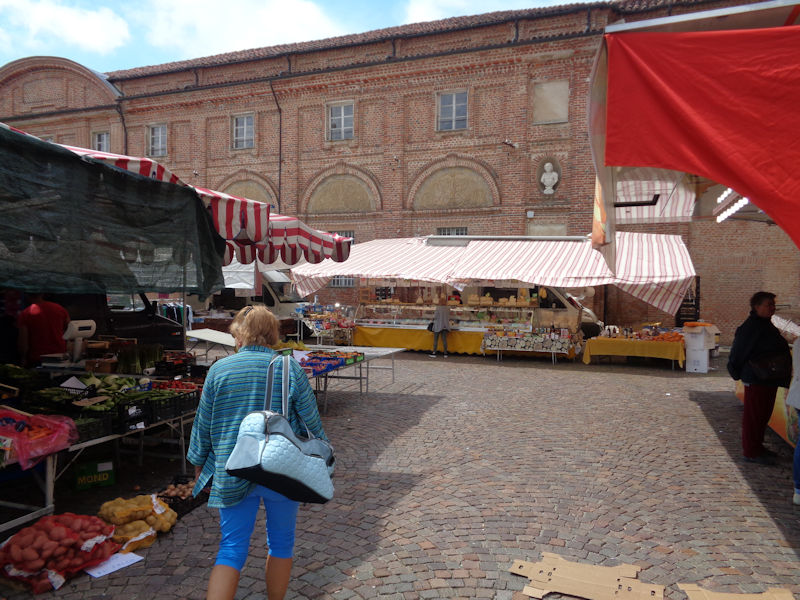
Kristin and Melvin the Doge in the Agliè street market
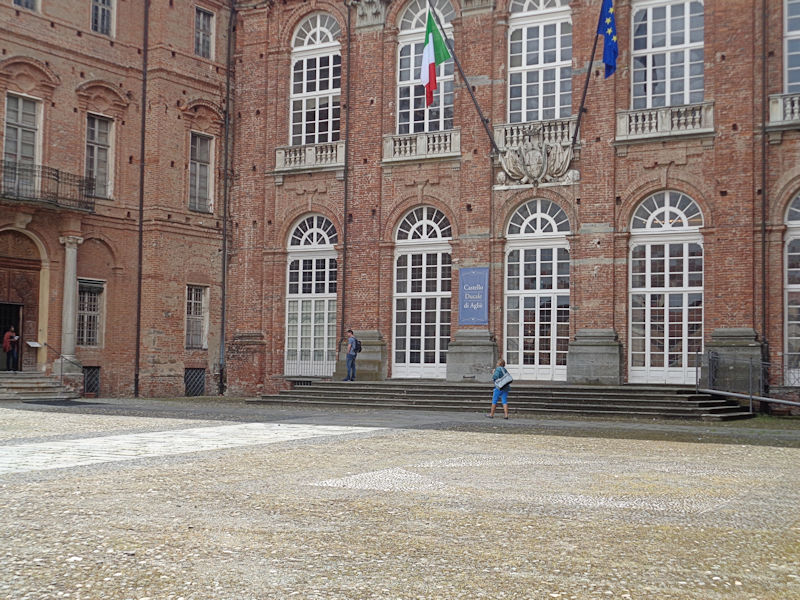
Awaiting our tour guide. This is probably the front door of the castle, but maybe not; we learnt only much later that the other side of it is rather grand as well.
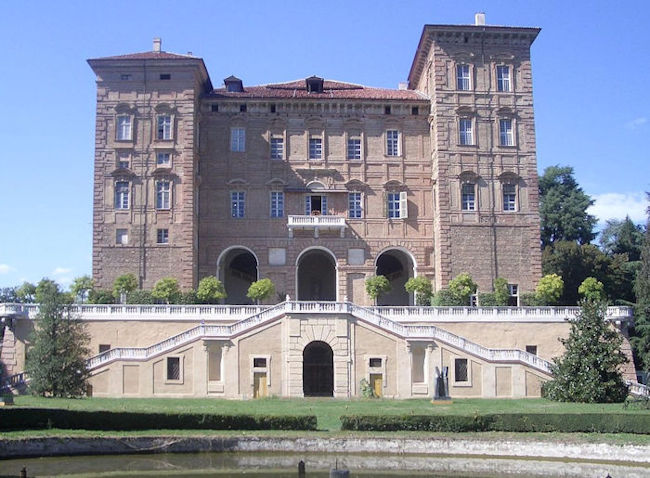
[from Wikipedia/Commons]
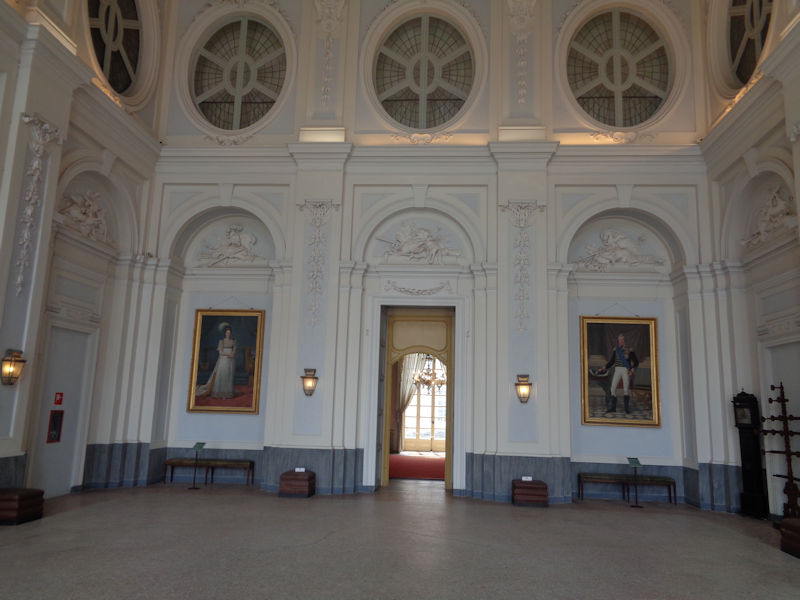
Into the entrance hall, formerly the guards' room, the portraits represent Charles Felix of Savoy and his wife Maria Cristina of Naples, King and Queen of the Savoyard Kingdom of Sardinia from 1821 to 1831. Charles Felix (Carlo Felice) was the inept, reactionary governor of Sardinia, noted for his cruelty, and later king of the Savoyard properties succeeding a couple of older brothers without heirs; he inherited this palace in 1824 from his sister Maria Anna, Duchess of Chablais, and like her resided here often, especially in summers.
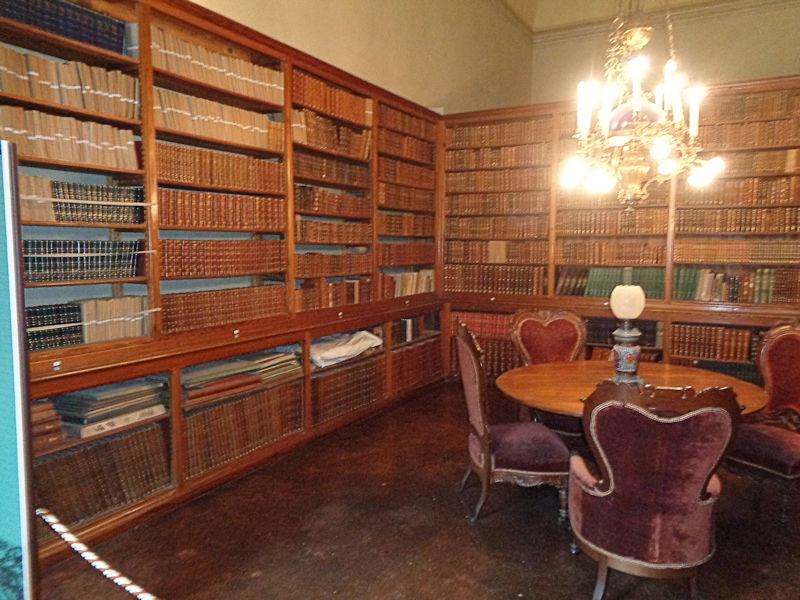
The origins of the palace go back to the 12th century fortifications of the Counts of San Martino, a local family of nobles who claimed descent from Arduin of Ivrea, King of Italy from 1002 to 1014, which were apparently first built in about 1141. A later Count, and Marquis of San Damiano, Filippo San Martino d'Agliè, lover and supporter of Maria Cristina Bourbon, wife of Vittorio Amedeo I, Duke of Savoy, undertook in about 1646 to convert the Palazzo d'Agliè from a fortress into a proper palace. The Savoy family purchased the place in 1763 for the residence of one of its younger sons, Benedetto Duke of Chablais, who further improved the palace significantly and in 1808 left it to his wife, his niece Maria Anna, who in turn bequeathed it to her brother Charles Felix in 1824.
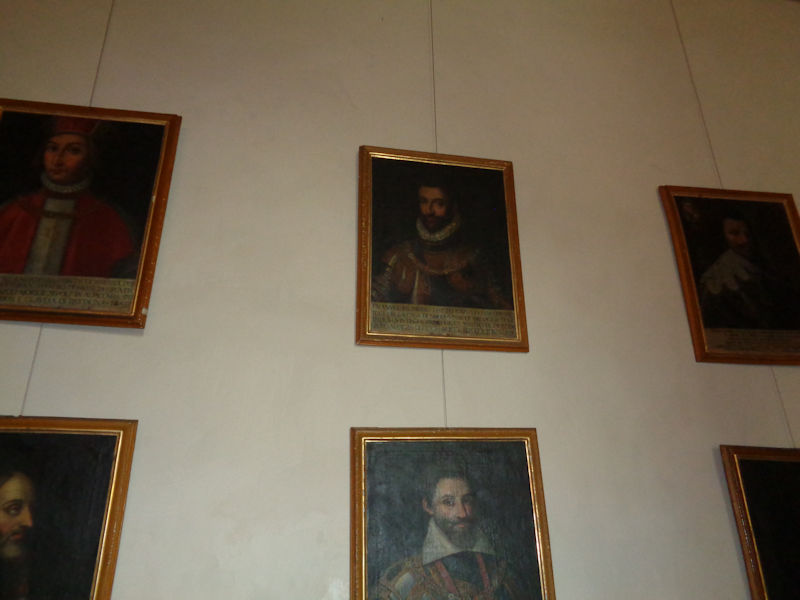
The Room of the Ancestors is festooned with wall-to-wall 17th century portraits of the Savoyard great and good -- at least the picture at the upper centre, of Duke Emmanuel Philibert, does look plausibly like the official portrait of him now in the Escorial.
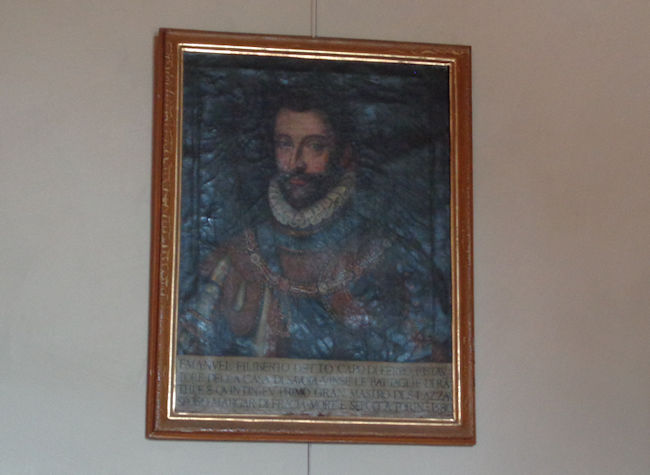
This chap is one of my favorites. Emmanuel Philibert (1528-1580), known as 'Ironhead' for his military exploits, was a military commander for the Spanish/German armies of the Holy Roman Emperor against the French; he inherited the Duchy of Savoy from his father in 1553, but in fact the French had already annexed Savoy in 1536. In the reign of Queen Mary I of England, he was a plausible suitor for the hand of the Princess Elizabeth. He commanded the huge Spanish victory over the French at Saint-Quentin in 1557, and in the resulting Peace of Cateau-Cambrésis (1559) he was restored to his family's Piedmont and Savoy properties. Back home, he moved the Savoyard capital from Chambéry in the Rhône-Alpes to Torino, and when he died in 1580 he was buried in the Chapel of the Holy Shroud of the Cathedral there -- the Shroud of Turin had been gifted to the Savoy family in 1453 and was translated from Chambéry to Torino by the Duke in 1578.

One of the two parallel long galleries flanking the central courtyard
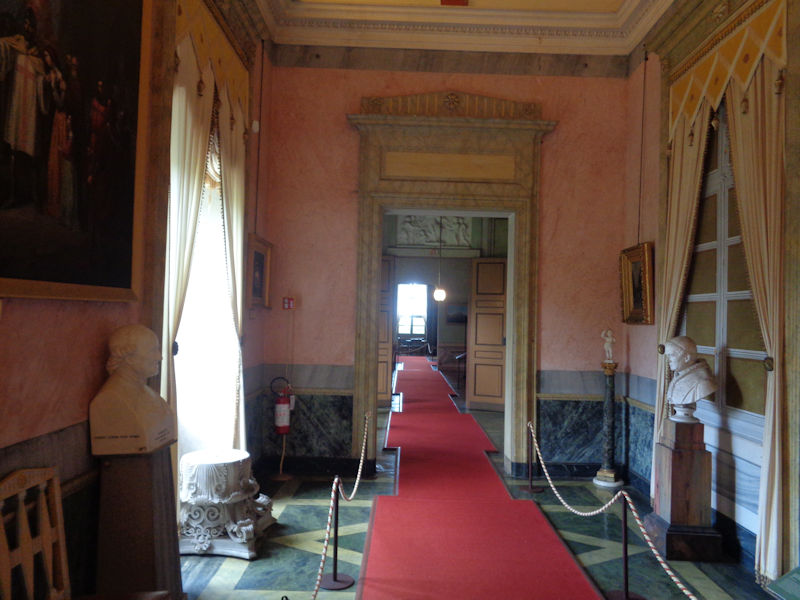
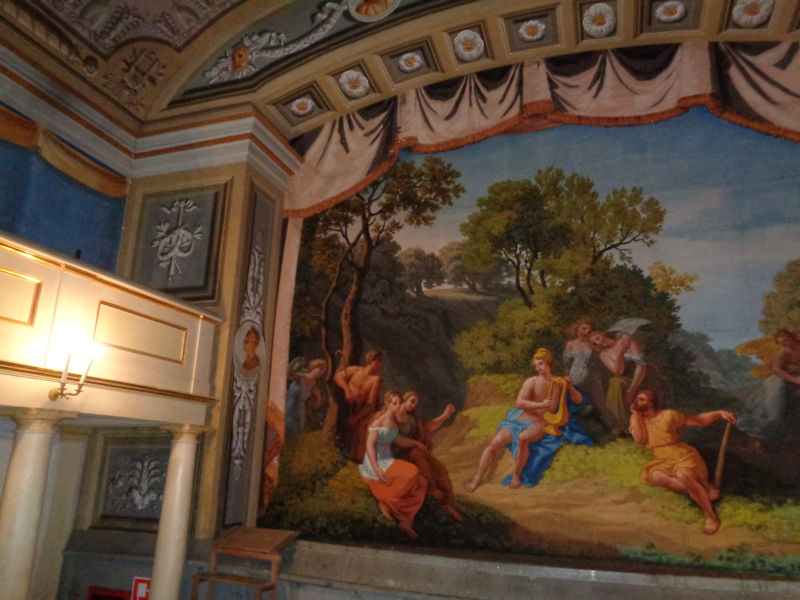
In the family theatre (1825) -- Charles Felix was a great fan of the opera (the Teatro Carlo Felice in Genoa was named for him in 1828), and this small room must have witnessed hours of operatic hilarity.
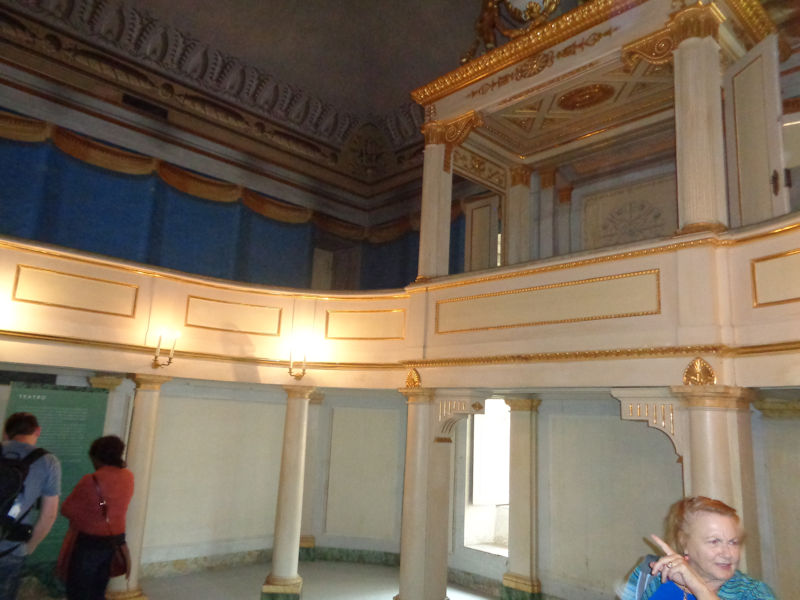
The royal box in the theatre
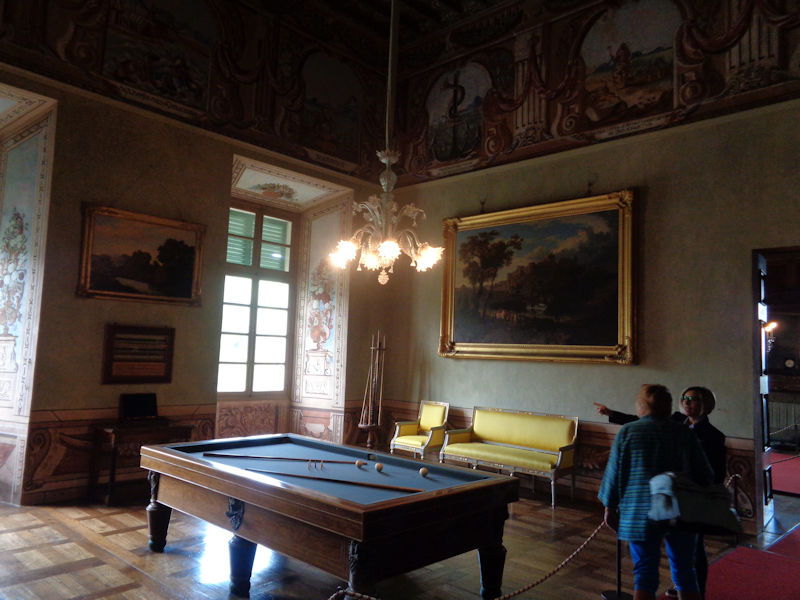
The 'Games Room'
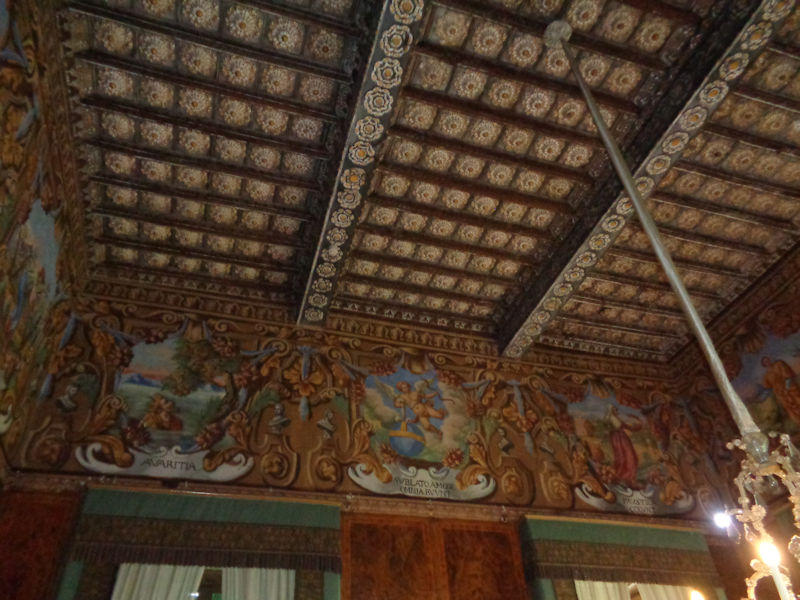
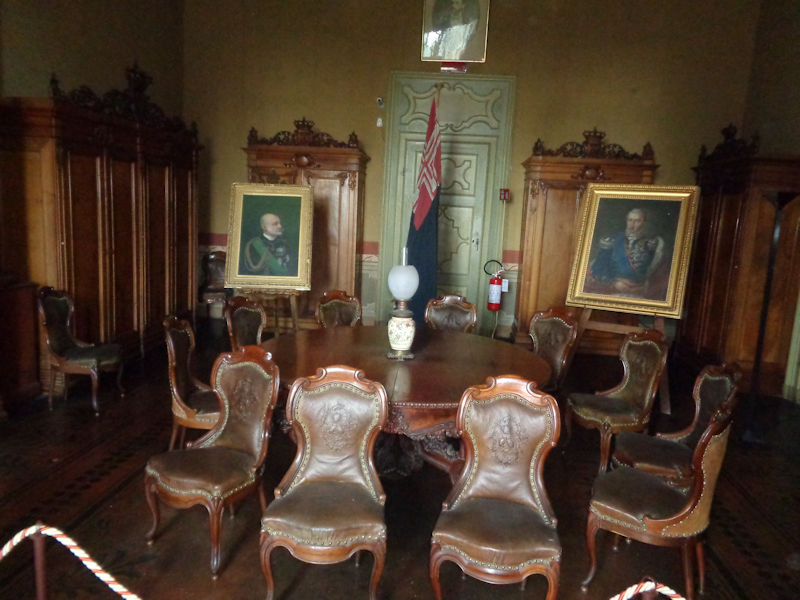

The 'Hall of Honour' (or the Arduino Room) illustrates events from the life of King of Italy Arduino of Ivrea, from whom the San Martino family claimed their noble descent. All of the pictures were created by Giovan Paolo Recchi of Como in 1665, and are fanciful.
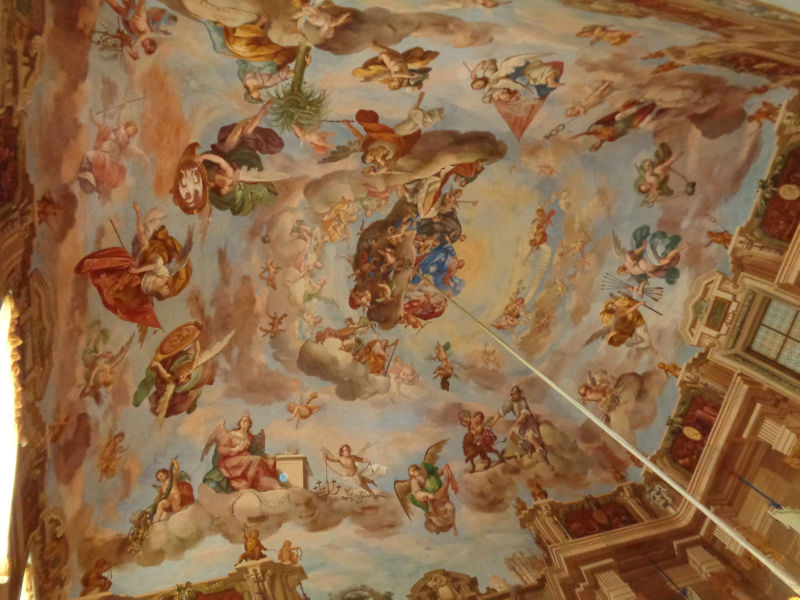
This apparently shows Arduino on the express route into Heaven, being greeted by the Madonna herself. (We've learnt that from people who've had the foresight to bring their binoculars with them.)
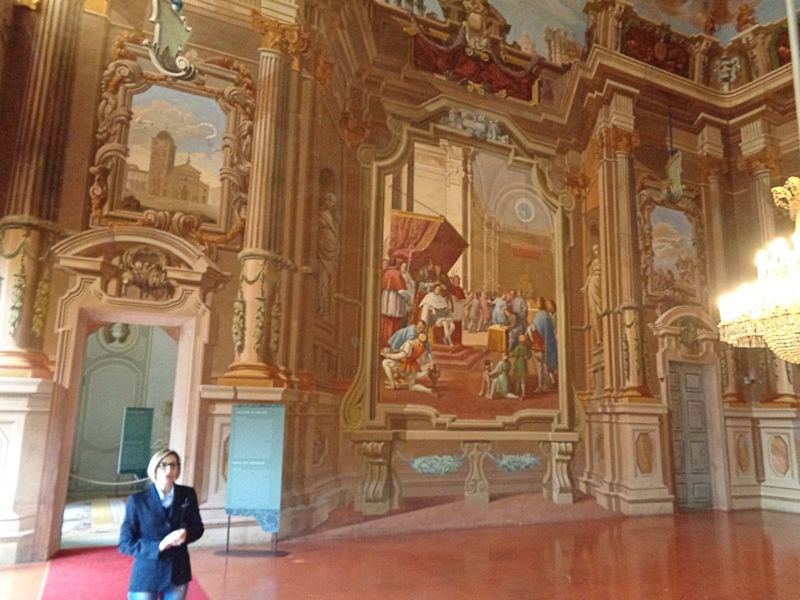
Our guide explains about Arduino's coronation as King of Italy in 1002 in the big picture behind. The German emperor Henry II came down to remove him but had to go home early, and King Arduin grew old and abdicated in 1014, retiring into a Benedectine Abbey for his last year on this planet.
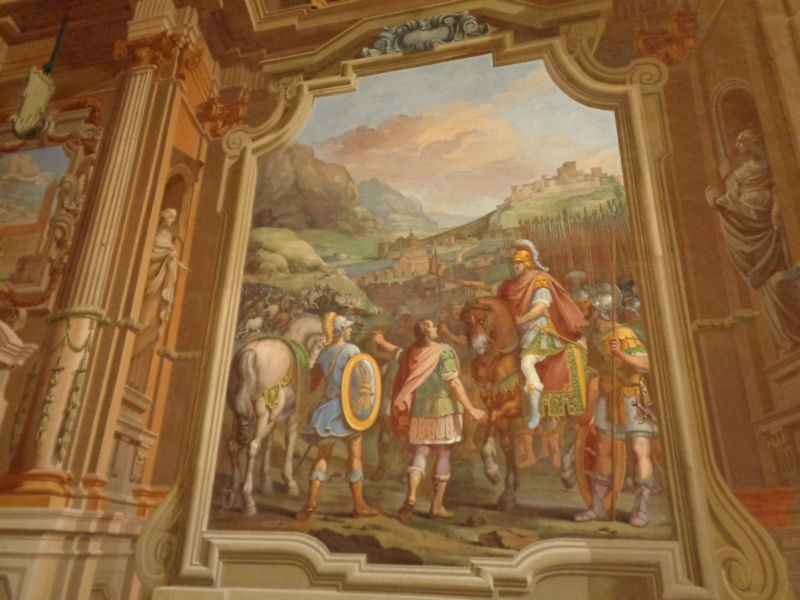
The other big picture, on the opposite wall: the 'Siege of the Rocca of Sparone' or Fortress of Sparone, some 90km north of Torino near the Gran Paradiso National Park in the Alps.
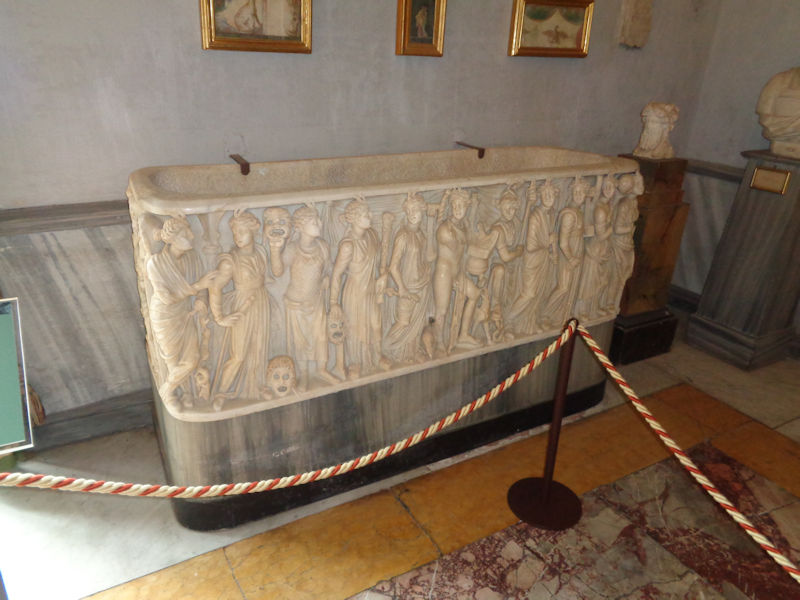
A sarcophagus with Apollo and the Muses all over it. This is a roomful of Roman artifacts recovered from Tusculum by Prince Lucien Bonaparte and bought up by King Charles Felix, but the sarcophagus comes from Sardinia.
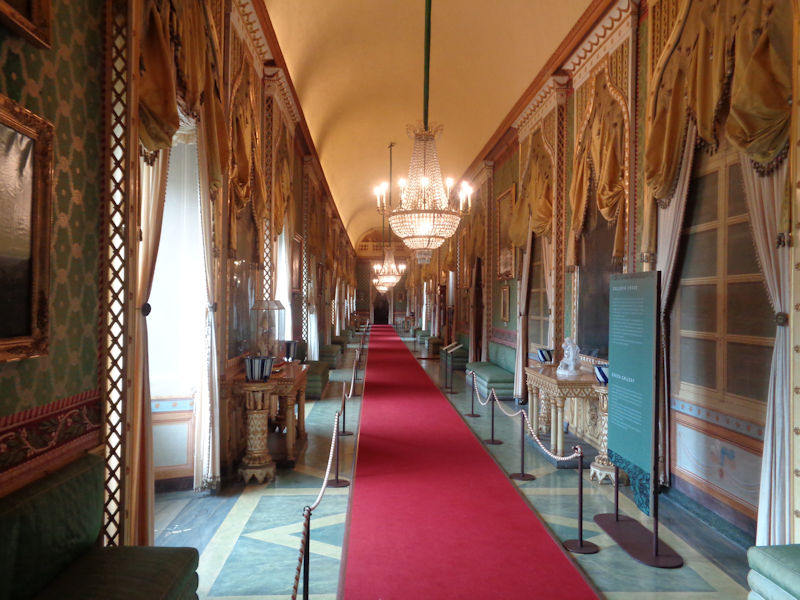
The other parallel long gallery
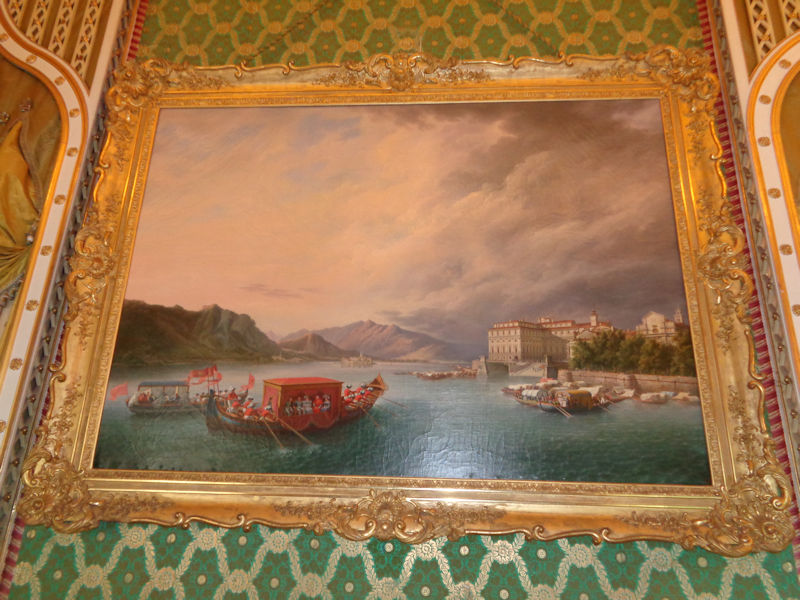
This picture, by a fellow named Righini, commissioned by the Queen and done in 1841, commemorates the late Charles Felix and Maria Cristina's visit to the Borromean Islands in Lake Maggiore -- the island is the Isola Bella across from Stresa.
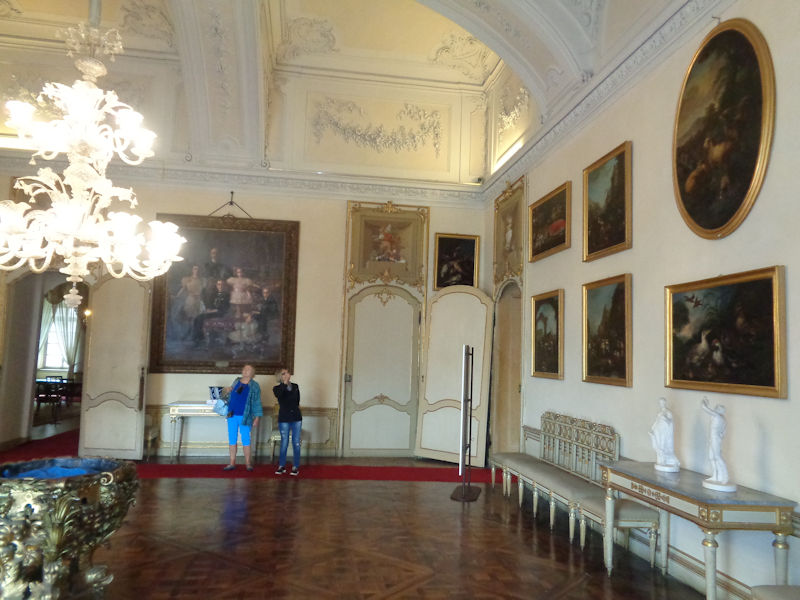
After confiscation by Napoleon's French in 1798, when the family of Savoy was forced to flee to Sardinia, the palace was transformed by the French army into a hospice and its grounds sold off as private lots -- in the post-Napoleonic adjustments, however, the Savoyard properties were restored to the family in 1823 and it was then that Charles Felix carried out the fourth modernization of the palace. Whilst busily suppressing all signs of liberal, egalitarian sentiment wherever they could be found.

The Palazzo was eventually sold off to the Italian state in 1939 and is now well cared for. This is a stairway in the palace that leads up and around the buildings of the piazza to the church across the square (presumably to avoid running into any of the inconvenient citizens; one is reminded of the secret papal passage from the Vatican to the fortress of the Castel Sant'Angelo).

Now we're off to the south again, and Melvin the Doge is already sleepy.
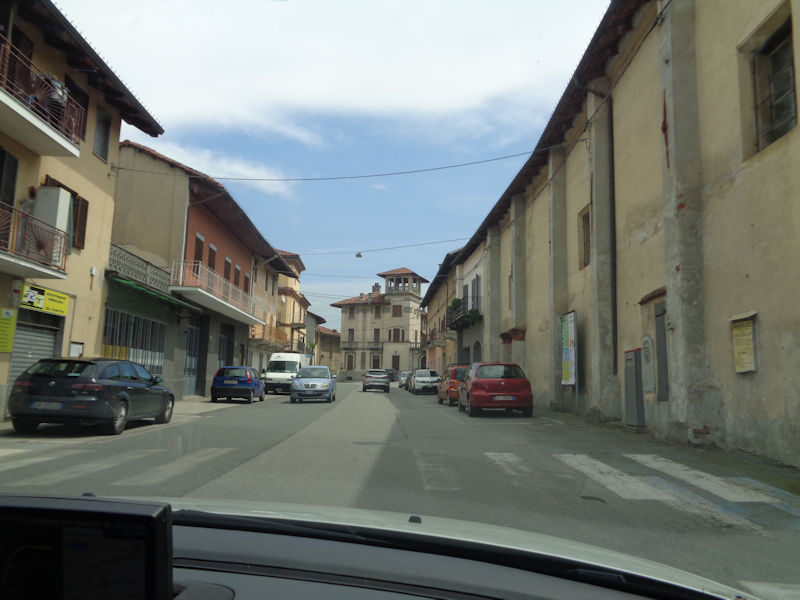
Street scenes as we process southward, through Chivasso, back roads (as above) to Asti, thence to Alba, and . . .
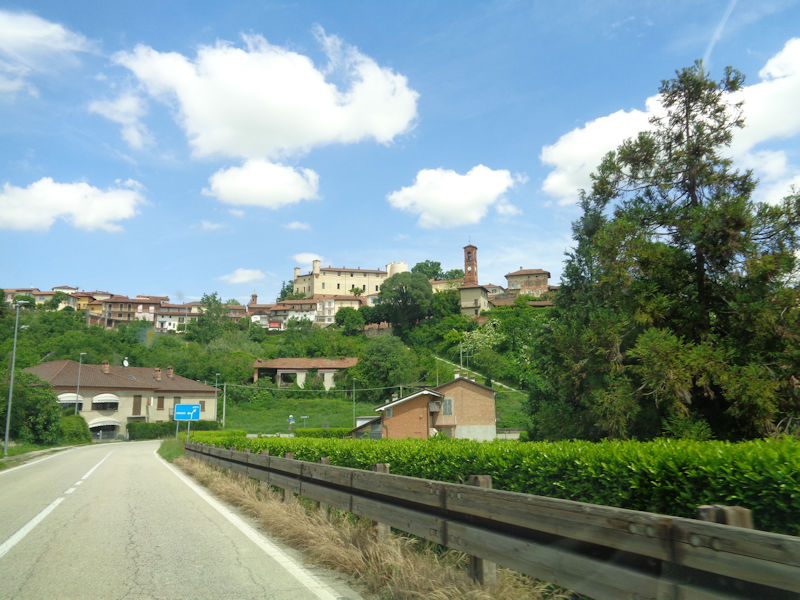
. . . finally to the frazione of Valle Talloria of the hilltop comune of Diano d’Alba, and our temporary digs in an apartment in the Tenuta Calabiana. (This photo shows Cortanze, between Chivasso and Asti.)
Next: Tenuta Calabiana in Valle Talloria, Diano d'Alba

 Dwight Peck's personal website
Dwight Peck's personal website




















































